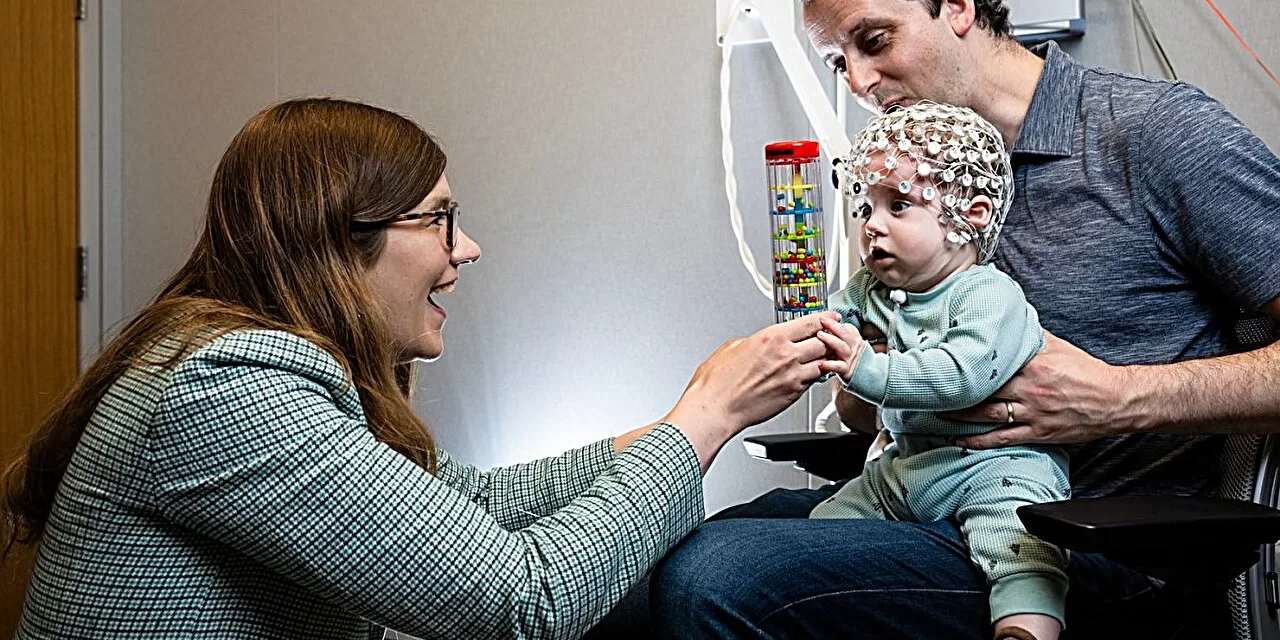Date: November 2, 2024
In an illuminating new study, researchers have found that the predictability of caregivers’ behaviors may play a pivotal role in fostering infants’ learning abilities. The research, led by Dr. Laurel Gabard-Durnam, an assistant professor of psychology at Northeastern University, has shed light on how the brain’s remarkable plasticity in infancy is influenced by interactions with caregivers. Published in Developmental Science, this study provides novel insights into how early, consistent caregiving behaviors can prime the infant brain for efficient learning.
The team at the Plasticity in Neurodevelopment (PINE) Lab recruited 262 caregivers and their infants for a two-part study to analyze how caregiver predictability affects learning. The first part involved observing caregivers’ interactions with their infants at around four months of age, while the second followed up six months later, examining the impact of these interactions on the infants’ ability to process new information.
During the initial sessions, caregivers played with their babies in a quiet room as researchers recorded and monitored their interactions. The team analyzed caregivers’ vocalizations, gestures, and movements, calculating the degree of predictability—or “entropy”—in their behavior. This entropy measure, originating in organizational psychology, quantifies levels of uncertainty and randomness in the caregivers’ interactions. The findings revealed that infants exposed to more predictable caregiving responded more adeptly to new learning tasks six months later.
In the follow-up, infants participated in an auditory task designed to measure their learning response to patterned information. While sitting on their caregiver’s lap, infants listened to sequences of musical notes arranged in predictable and unpredictable patterns. Researchers used electroencephalograms (EEGs) to track neural responses, examining how predictability in the initial caregiving affected infants’ ability to recognize and respond to these patterns.
Dr. Gabard-Durnam noted, “Our findings showed that infants whose caregivers displayed more predictable auditory cues demonstrated stronger learning capabilities when confronted with a new task. This emphasizes that the way caregivers interact with their children is not only vital for teaching what to learn but also how to learn.”
The significance of these results lies in the mechanistic understanding of infant brain development. Previous studies have underscored the importance of day-to-day interactions between caregivers and children; however, this research provides fresh insights into how predictability in these interactions influences the brain’s learning pathways. By adapting their caregiving to be more predictable, caregivers may effectively support a child’s ability to navigate and learn from an increasingly complex environment.
Gabard-Durnam also suggested that this research could inform early intervention strategies. Predictable, consistent interactions, she noted, could offer a foundation for programs aiming to promote positive neurodevelopmental outcomes, especially for children at risk of atypical neurodevelopment.
As scientific understanding of early brain development advances, these findings underscore the profound impact caregivers can have by simply maintaining regular, predictable behaviors during interactions. Further research in this area could potentially transform strategies for nurturing infants’ learning potential in their critical early months.
For more information:
Forest, T. A., et al. “Early Caregiver Predictability Shapes Neural Indices of Statistical Learning Later in Infancy.” Developmental Science (2024). DOI: 10.1111/desc.13570











